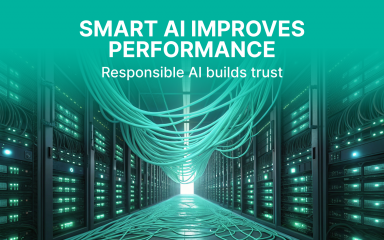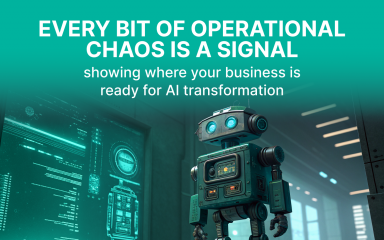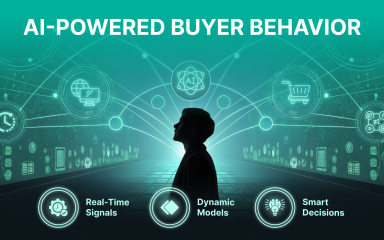Headless Commerce Is Here to Stay – And It’s Transforming Digital Retail
Once upon a time, “headless commerce” sounded like one of those things that only developers or tech evangelists threw around at conferences. But not anymore. It’s become a real thing, not just a passing phase or the next big buzzword. The reason? It’s actually working.
And the numbers back it up. The global headless commerce market is projected to grow from USD 1.74 billion in 2025 to a total of USD 7.16 billion by 2032, clocking an impressive 22.4% compound annual growth rate (CAGR). Early users confirm: the results are noticeable. This evolution in ecommerce architecture is driving new possibilities for flexibility, customization, and omnichannel experiences.
Let’s be honest: traditional eCommerce platforms aren’t cutting it like they used to. When comparing headless commerce vs traditional models, headless commerce offers greater flexibility and speed, while traditional commerce is often less adaptable to rapid changes. Consumers are bouncing between devices faster than ever, expecting rich, fast, ultra-personal experiences. Retailers? They’re scrambling to keep up. The choice of ecommerce architecture directly impacts how an ecommerce website functions, how easily it can be managed, and how well it meets modern customer expectations.
That’s where headless commerce comes into play — and it’s not just redefining how brands show up online; it’s quietly becoming the backbone of digital agility. The benefits of headless commerce are no longer theoretical. They’re real, and early adopters are making them work.
What Is Headless Commerce Architecture And How It Works
So…what is a headless commerce platform? Before understanding how headless commerce works, let’s learn: instead of having your front-end (the user-facing part of your website or app) tightly bound to your back-end (where the product data, inventory, and checkout logic live), you split them apart. This is known as a decoupled architecture, where headless commerce separates the frontend presentation layer from the backend system, enabling greater flexibility and innovation.
Think of it this way: the front-end is the stage, where customers browse, search, and make purchases. The back-end? That’s backstage — storing all the scripts, props, and instructions to make things run smoothly, powered by the commerce engine at the core of the back end system. In headless commerce, they’re connected by application programming interfaces (APIs), but they’re no longer tied at the hip.
This decoupling gives developers the freedom to build whatever kind of digital storefront they want—whether it’s a lightning-fast mobile app, a voice shopping experience, or an interactive AR tool.
And here’s the kicker: because they’re using a headless commerce platform, they don’t have to re-engineer the entire system every time they want to change the design or try a new channel. Front-end and back-end can evolve independently, finally. APIs connect the frontend to backend functionality such as checkout, pricing, and security, allowing for seamless updates and omnichannel integration.
That’s the core headless commerce meaning—flexibility, speed, and control. Or, if you’re feeling more technical, the headless commerce definition is a digital architecture where the front and back ends operate independently, communicating through application programming interfaces (APIs) to create customized experiences across any digital touchpoint. A robust back end system ensures scalability and performance, supporting high-volume transactions and rapid deployment of new features.
It also opens the door to enhanced analytics, allowing teams to measure the effectiveness of front-end changes, monitor performance across channels, and better understand user behavior, without being limited by rigid systems. This is made possible by the business logic within the back-end processes, which enables advanced capabilities like AI based demand forecasting and customer behavior modeling across multiple touchpoints.
Why Early Adopters Are Making the Shift
Now, let’s talk about the businesses that’ve already gone headless. Spoiler: they’re not regretting it.
These are companies—from fast-growing DTC brands to enterprise giants—who saw the writing on the wall. They needed more speed. More flexibility. More control over customer experiences. And frankly, more room to experiment. For online businesses, this means greater flexibility, faster updates, and better adaptation to change.
Enterprise headless e commerce has become the golden ticket for building truly omnichannel ecosystems. Want to launch a shopping feature in your mobile app, deploy native mobile apps, or test a new landing page layout—without disrupting the checkout flow? Headless makes that possible, enabling rapid innovation and reducing time to market for new features and channels.
Let’s not forget: the pandemic was a wake-up call. When physical stores shuttered and digital traffic exploded, those stuck with clunky, monolithic platforms struggled. Meanwhile, brands using headless commerce solutions were able to pivot faster. Launch new content, plug in new headless commerce tools, personalize offers—all without breaking their storefront. Online retailers and ecommerce stores especially benefited from this flexibility, adapting quickly to market changes.
And because headless e-commerce allows teams to work in parallel—your development team and other development teams can customize, integrate, and deploy solutions while marketers tweak the UI—innovation moves a lot faster. This parallel workflow not only accelerates project timelines but also reduces development time and costs. However, adopting headless commerce requires sufficient development resources to implement and maintain the system effectively.
They can also respond quickly to customer feedback by adjusting product listings, enhancing visual descriptions, and integrating reviews across channels, which improves visibility and trust at every stage of the buyer journey. Optimizing the customer journey and managing multiple customer touchpoints across websites, apps, and other digital platforms becomes much more efficient with a headless architecture.
The Real-World Benefits of Headless Commerce No One Talks About Enough
Here’s the part that gets interesting—the actual payoff.
Brands that move to headless commerce platforms aren’t doing it because it’s trendy. They’re doing it because it delivers results. Let’s break it down:
- Speed: Sites load faster. Period. And that’s a big deal—even a one-second delay in load time can hurt conversions.
- UX Freedom: Want a fully custom mobile-first design? An animated product builder? A voice-enabled shopping assistant? Go for it. You’re not stuck using cookie-cutter themes, and you have the option for custom development for maximum flexibility.
- SEO Gains: Headless setups allow for more control over page structure, metadata, and performance—all big wins for search optimization.
- Backend Benefits: Advanced headless systems offer robust inventory management as a core capability, ensuring seamless integration and scalability.
- Technical Advantages: Headless technology enables flexibility, omnichannel experiences, and easier integration with third-party tools.
- Future-Proofing: New channels? No problem. Just plug them in through APIs without needing to restructure the whole site. Operating in a headless environment supports scalability and ongoing innovation, keeping your business ready for future trends.
- Streamlined Operations: Decoupling front-end and back-end streamlines business operations, making it easier to adapt to market changes.
And one more underrated perk? Content velocity. The marketing team can publish updates, change layouts, or A/B test elements without waiting on IT. A headless solution supports rapid updates and integration, empowering ecommerce managers to manage the storefront more independently. That’s huge, especially during high-stakes seasons like BFCM.
Plus, with better analytics, teams can continuously optimize experiences based on real-time data, rather than waiting for quarterly performance reviews to identify what’s working (or not).
When considering platform choices, it’s important to evaluate other headless solutions available in the market, as well as the technical resources your team has for implementation. While headless commerce offers flexibility, complex enterprise implementations may come with higher development costs. In contrast, a traditional ecommerce solution may offer quick setup and ease of use but lacks the flexibility and innovation potential of a headless approach.
These are the headless commerce benefits brands talk about once they’ve made the leap — and they’re too significant to ignore. In fact, many of these gains also complement broader AI use cases in eCommerce, from predictive personalization to automated product tagging.
How Headless Commerce Supercharges Customer Experience
Headless commerce solutions are redefining what’s possible when it comes to delivering standout customer experiences. By leveraging headless commerce architecture, businesses can decouple the front end from the back end commerce functionality, giving them the freedom to craft highly personalized customer journeys across every digital touchpoint.
This separation means your online store’s presentation layer can be tailored to meet the unique needs and preferences of your audience—whether that’s a sleek mobile interface, a dynamic web experience, or even a custom interface for a specific customer segment. With headless commerce, you’re not limited by the constraints of a traditional ecommerce platform; instead, you can innovate rapidly and respond to changing customer expectations.
One of the biggest benefits of headless commerce is the ability to seamlessly integrate with third party tools. Want to add a new loyalty program, advanced analytics, or a cutting-edge personalization engine? Headless commerce solutions make it easy, allowing you to enhance customer engagement and retention without overhauling your entire system.
Ultimately, this approach empowers businesses to focus on what matters most: delivering exceptional, personalized customer experiences that drive loyalty and boost revenue. The result? Happier customers, higher conversion rates, and a stronger brand reputation in a crowded digital marketplace.
Choosing The Right Headless Commerce Solutions—It’s Not One-Size-Fits-All
Let me guess—you’re thinking: “Okay, sounds good. But how do I pick the right headless commerce software?”
Good question.
There are numerous headless commerce platforms available, each with its own strengths. Some integrate with traditional content management systems (CMSs), such as Contentful or Sanity. Others offer composable ecosystems, letting you pick and mix components like search, payment, or PIM (product information management) tools.
A solid headless commerce solution should check a few non-negotiable boxes:
- Robust APIs that can handle scale.
- A powerful commerce engine at the core to manage inventory, checkout, and security.
- Easy integration with third-party services—think CRM, marketing automation, search optimization, etc.
- Developer documentation that doesn’t feel like decoding hieroglyphs.
- And let’s be honest: good support.
Some of the more recognizable names in this space include Shopify Plus, BigCommerce, Commercetools, Fabric, and Adobe Commerce. Adobe Commerce, for example, supports headless architecture and integrates with other Adobe solutions, offering strong customization and personalization capabilities. They’re not all created equal, but they’re all light-years ahead of traditional platforms in terms of flexibility.
Choosing a headless platform is especially beneficial for enterprise-level businesses that need scalable, customizable solutions and want to build unique, multi-channel customer experiences.
The real key is aligning the platform with your business strategy. To successfully implement headless commerce, you’ll need to assess your current architecture, select the right platform, and plan for seamless integration and scalability. Whether you’re focused on international expansion, personalized experiences, or faster experimentation cycles, the right platform should support those goals, not limit them.
When planning integration or migration, a well-executed headless implementation is crucial for performance, scalability, and a smooth transition from legacy or traditional platforms.
Is Your Tech Stack Ready For Headless Commerce Development?
Now for the real talk: even the shiniest headless commerce platform won’t help if your team isn’t ready to use it.
You’ll need developers who understand modern JavaScript frameworks (React, Vue, etc.), folks who can manage APIs, and ideally a product manager who gets how it all connects. A scalable back end system is also crucial to handle high-volume transactions and support rapid updates as your business grows.
And if you’re in the enterprise headless commerce crowd? Expect a bigger lift. You might need to rethink your development process, retrain teams, or phase the migration gradually. Headless commerce can significantly reduce the arduous development process of traditional storefront updates, streamlining frontend-backend decoupling for faster implementation and easier customization. However, make sure you have sufficient development resources—talent, time, and technical expertise—to support the transition.
That said, there’s no need to boil the ocean. Start small — maybe with a single product line or a new sales channel. You’ll learn what works, where the friction is, and how to build your internal processes around the flexibility headless offers.
Site Speed and Scalability: The Technical Edge of Headless
When it comes to technical performance, headless commerce platforms offer a clear advantage. By separating the front end from the back end systems, headless commerce solutions enable lightning-fast page loads and a more responsive user experience—key factors in keeping customers engaged and reducing bounce rates.
This decoupled headless architecture also makes it easy to scale your ecommerce site as your business grows. Whether you’re handling a surge in traffic during peak sales or expanding to new markets, headless commerce ensures your online store remains fast and reliable. There’s no need to worry about performance bottlenecks or downtime; the back end can be optimized and scaled independently from the customer-facing layer.
With a headless commerce system, you can deliver a consistent customer experience across all devices and platforms, ensuring that every shopper enjoys the same speed and reliability—no matter how or where they interact with your brand. The technical benefits are clear: reduced latency, improved site speed, and the ability to scale effortlessly as your business evolves.
Unlocking True Omni-channel Experiences
Headless commerce solutions are the key to unlocking seamless omni-channel experiences for today’s connected consumers. By leveraging headless commerce platforms, businesses can integrate with a wide range of channels—from mobile apps and voice assistants to social media and beyond—ensuring customers can engage with your brand wherever they are.
Thanks to headless commerce architecture, you can create personalized customer experiences tailored to each channel and device. Whether a shopper is browsing on their phone, interacting with a smart speaker, or scrolling through social media, your brand delivers a unified, consistent message and experience.
This omni-channel approach not only drives customer engagement but also builds loyalty by meeting customers on their terms. With headless commerce, your business can maintain a cohesive brand voice and deliver relevant, personalized interactions at every touchpoint. The benefits are clear: increased customer satisfaction, a stronger brand reputation, and accelerated revenue growth.
Headless Commerce in Action: Real-World Examples
The impact of headless commerce solutions isn’t just theoretical—leading companies are already seeing impressive results. Take The Sazerac House, Olam Group, and Pentair, for example. These businesses have embraced headless commerce to deliver personalized customer experiences, boost site speed and scalability, and create truly omni-channel interactions.
By adopting a headless approach, these companies have been able to innovate quickly, stay ahead of the competition, and build a more agile ecommerce ecosystem. They’ve leveraged the flexibility of headless commerce to improve customer engagement, streamline operations, and drive business growth.
Their success stories highlight the transformative potential of headless commerce solutions. For any business looking to enhance their ecommerce site and deliver next-level customer experiences, these real-world examples offer a blueprint for success in the digital age.
So…Is Headless Commerce Just Hype Compared to Traditional Ecommerce Platforms? Not Even Close
Let’s bring it home.
If your current platform feels like it’s holding you back—if your team’s spending more time patching than building—then yeah, it might be time to seriously look at headless commerce.
It’s not magic. It’s not a silver bullet. But for brands who care about digital performance, experience, and agility, it is a smarter way forward.
And the early adopters? They’re already reaping the rewards.
The Future of Headless Commerce
The future of headless commerce is bright—and it’s evolving at a rapid pace. As more businesses adopt headless commerce solutions, we’re seeing a growing emphasis on personalized customer experiences, omni-channel engagement, and seamless integration with third party tools.
Emerging technologies like artificial intelligence, machine learning, and the Internet of Things (IoT) are set to further enhance the capabilities of headless commerce, enabling businesses to deliver even more sophisticated and engaging customer experiences. These innovations will make it easier to anticipate customer needs, automate complex processes, and create truly dynamic online stores.
As the ecommerce landscape continues to shift, headless commerce will be at the forefront, empowering businesses to stay agile, innovate quickly, and outperform the competition. For companies ready to embrace new technologies and put customer experiences at the center of their strategy, headless commerce solutions offer a powerful path to long-term success.












